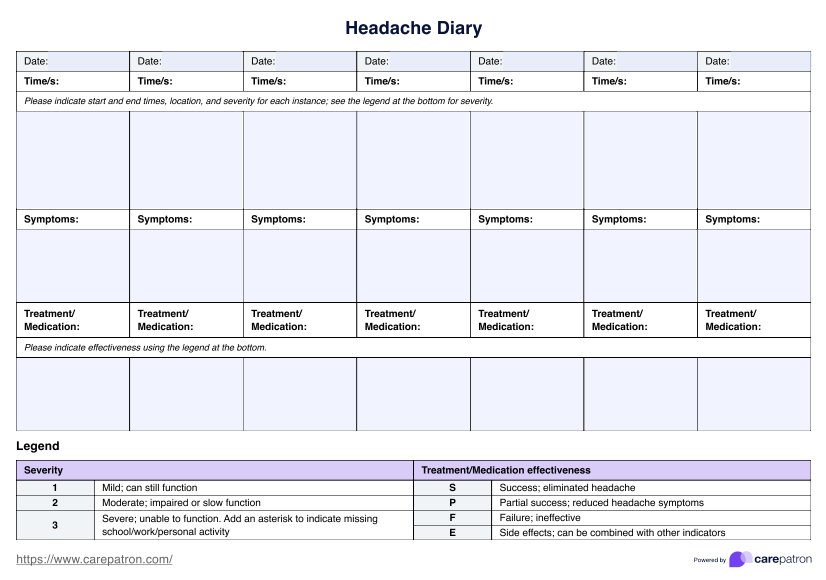Keeping a Headache Diary can significantly aid in diagnosis. It gives healthcare professionals detailed insights into headache patterns, triggers, and treatment responses, enabling more accurate and personalized diagnoses.

Headache Diary
For effective headache management and treatment, try our Headache Diary template today—it's free on the Carepatron app!
Headache Diary Template
Commonly asked questions
Specific components in dairy, like tyramine, histamine, and casein, can trigger headaches in some individuals. It's crucial to track dairy consumption in a Headache Diary to determine if it's a trigger.
The 5 C's of headaches refer to common dietary triggers: cheese, chocolate, coffee, cola drinks, and citrus fruits. However, managing migraines involves more than just avoiding these items; a holistic approach to diet and lifestyle is essential for effective relief.
EHR and practice management software
Get started for free
*No credit card required
Free
$0/usd
Unlimited clients
Telehealth
1GB of storage
Client portal text
Automated billing and online payments











